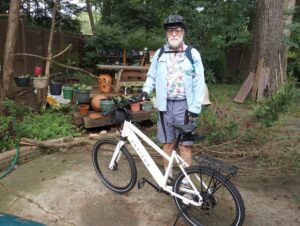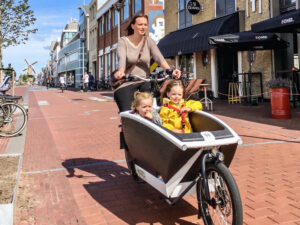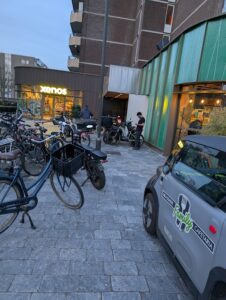
From a distance it looks a lot like the 40 year old mountain bikes I saw a few weeks ago, at the Mountain Bike Museum in the Netherlands. But it gradually became clear during my stay there, and has become more obvious since, that the heyday of such bikes is ending.
Batteries are getting better, getting cheaper, which means the compromises found in the standard bike design are no longer necessary. Fat Tire “Class 3” e-bikes are now available for half the cost of my Edison. Women with families much prefer cargo bikes like the Urban Arrow, trumpeted as “your next car.”

While kids as young as 10 are using Fat Tire bikes in Europe, here in the U.S. I’m mostly seeing them ridden by young men on their way somewhere. The bike is comfortable, often with a motorcycle-style seat, and it’s fast enough to be safer than my Edison in traffic. In the Netherlands this is a problem, because the bike paths are designed for slower, smaller bicycles. In the U.S., which lacks bike paths, the higher speed is a benefit.
E-bikes are also becoming commercial vehicles on both sides of the Atlantic. Delivery workers are using them in place of motorcycles to get hot food to your table. Note the word driving in the previous sentence.
What Better Batteries Mean

Batteries are continuing to evolve. Sodium and solid state batteries are starting to replace older, dangerous lithium ion. Greater energy density means more options in terms of a bike’s weight, speed, and range. The market for these batteries is big and growing fast, meaning innovation is a given.
This means cities may not need separate bike trails, and the trails they build may need tighter regulation to prevent traffic jams. This is what I mean by the e-transport revolution. It’s not about bicycling per se, but bicycling as a metaphor for measuring your needs based on distance, load, and the amount of pure pleasure you want from the journey.
If you’re only going a few miles, if you’re not moving a ton of stuff, why do you need a car, especially if there are no compromises on comfort using a smaller, easier to park bike, or bike-like object?









